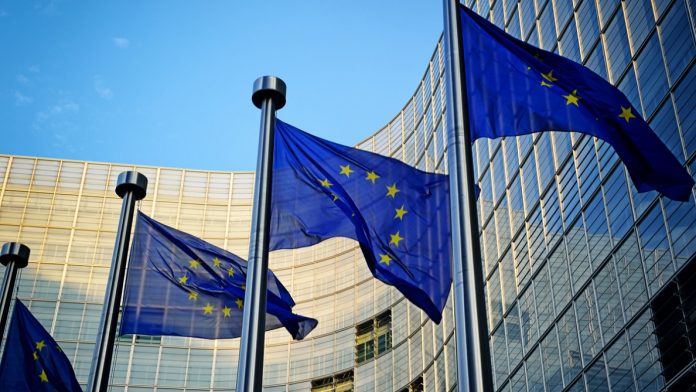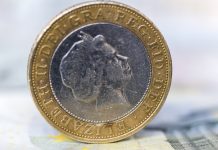The pound lost ground versus the euro in the previous session as no deal Brexit planning unnerved investors. The pound euro exchange rate dropped to a low of €1.0914 before recouping some of those losses towards the close. The pair is holding steady in early trade on Thursday.
| What do these figures mean? |
| When measuring the value of a pair of currencies, one set equals 1 unit and the other shows the current equivalent. As the market moves, the amount will vary from minute to minute.
For example, it could be written: 1 GBP = 1.13990 EUR Here, £1 is equivalent to approximately €1.14. This specifically measures the pound’s worth against the euro. If the euro amount increases in this pairing, it’s positive for the pound . Or, if you were looking at it the other way around: 1 EUR = 0.87271 GBP In this example, €1 is equivalent to approximately £0.87. This measures the euro’s worth versus the British pound. If the sterling number gets larger, it’s good news for the euro. |
Concerns over Brexit are going nowhere fast. Whilst the EU Council President Donald Tusk has rebuffed Johnson’s demands to remove the Irish backstop clause from the Withdrawal Agreement, German Chancellor Angel Merkel has challenged Boris Johnson to come up with a better alterative in the next 30 days. Whilst this sounds like a positive move by Merkel, this is actually what the EU has been saying for the past year. If the UK has an alternative, they should share it. The pound picked up off its lows as no deal Brexit fears eased marginally.
| Why is a “soft” Brexit better for sterling than a “hard” Brexit? |
| A soft Brexit implies anything less than UK’s complete withdrawal from the EU. For example, it could mean the UK retains some form of membership to the European Union single market in exchange for some free movement of people, i.e. immigration. This is considered more positive than a “hard” Brexit, which is a full severance from the EU. The reason “soft” is considered more pound-friendly is because the economic impact would be lower. If there is less negative impact on the economy, foreign investors will continue to invest in the UK. As investment requires local currency, this increased demand for the pound then boosts its value. |
Barclays Bank said that they now view a no deal Brexit as the base case scenario. French President Emmanuel Macron has said that he also views a disorderly Brexit as the most likely outcome now. Boris Johnson will meet with Emmanuel Macron today.
Whilst Brexit will continue to dominate the direction of the pound, investor could turn towards data from the Confederation British Industry as they update the market on reported sales. Analysts are expecting gloomy figures.
Will Eurozone PMI Figures Drag On Euro?
The euro experienced a relatively quiet session on Wednesday as investors looked ahead to the release of a string of PMI data from the eurozone, plus the release of the minutes from the European Central Bank’s monetary policy meeting last month.
After data showed that Germany slipped into contraction in the second quarter, investors will be particularly keen to see how the German manufacturing sector is faring. German manufacturing PMI will give investors an insight as to whether the sector is still suffering in the wake of on the ongoing US — Sino trade dispute. Analysts are expecting the contraction in the sector to deepen to 43 in August, down from 43.2 in July. Weaker data would suggest that the German economy was still under pressure and that a contraction in the third quarter is increasingly likely. Two consecutive contracting sectors are a technical recession. Under these conditions the ECB could be more likely to cut interest rates at the next monetary policy meeting.
| Why do interest rate cuts drag on a currency’s value? |
| Interest rates are key to understanding exchange rate movements. Those who have large sums of money to invest want the highest return on their investments. Lower interest rate environments tend to offer lower yields. So, if the interest rate or at least the interest rate expectation of a country is relatively lower compared to another, then foreign investors look to pull their capital out and invest elsewhere. Large corporations and investors sell out of local currency to invest elsewhere. More local currency is available as the demand of that currency declines, dragging the value lower. |
DISCLAIMER
Currencylive.com is a site operated by TransferWise Inc. (“We”, “Us”), a Delaware Corporation.
The content on our site is provided for general information only. It is not intended to amount to advice on which you should rely. You must obtain professional or specialist advice before taking, or retain from, any action on the basis of the content on our site.
Although we make reasonable efforts to update the information on our site, we make no representations, warranties or guarantees, whether express or implied, that the content on our site is accurate, complete or up to date. Some of the content posted on this site has been commissioned by Us, but is the work of independent contractors. These contractors are not employees, workers, agents or partners of TransferWise and they do not hold themselves out as one. The information and content posted by these independent contractors have not been verified or approved by Us. The views expressed by these independent contractors on currencylive.com do not represent our views.





